Filet Mignon in Cast Iron Skillet
This easy recipe for perfectly seared filet mignon results in a caramelized, golden crust on the outside with a juicy, tender center. It gets finished with a classic butter baste with garlic and herbs for a steakhouse-worthy, perfect filet mignon that's easy enough for any home cook to master, regardless of skill level.
This post may contain affiliate links.
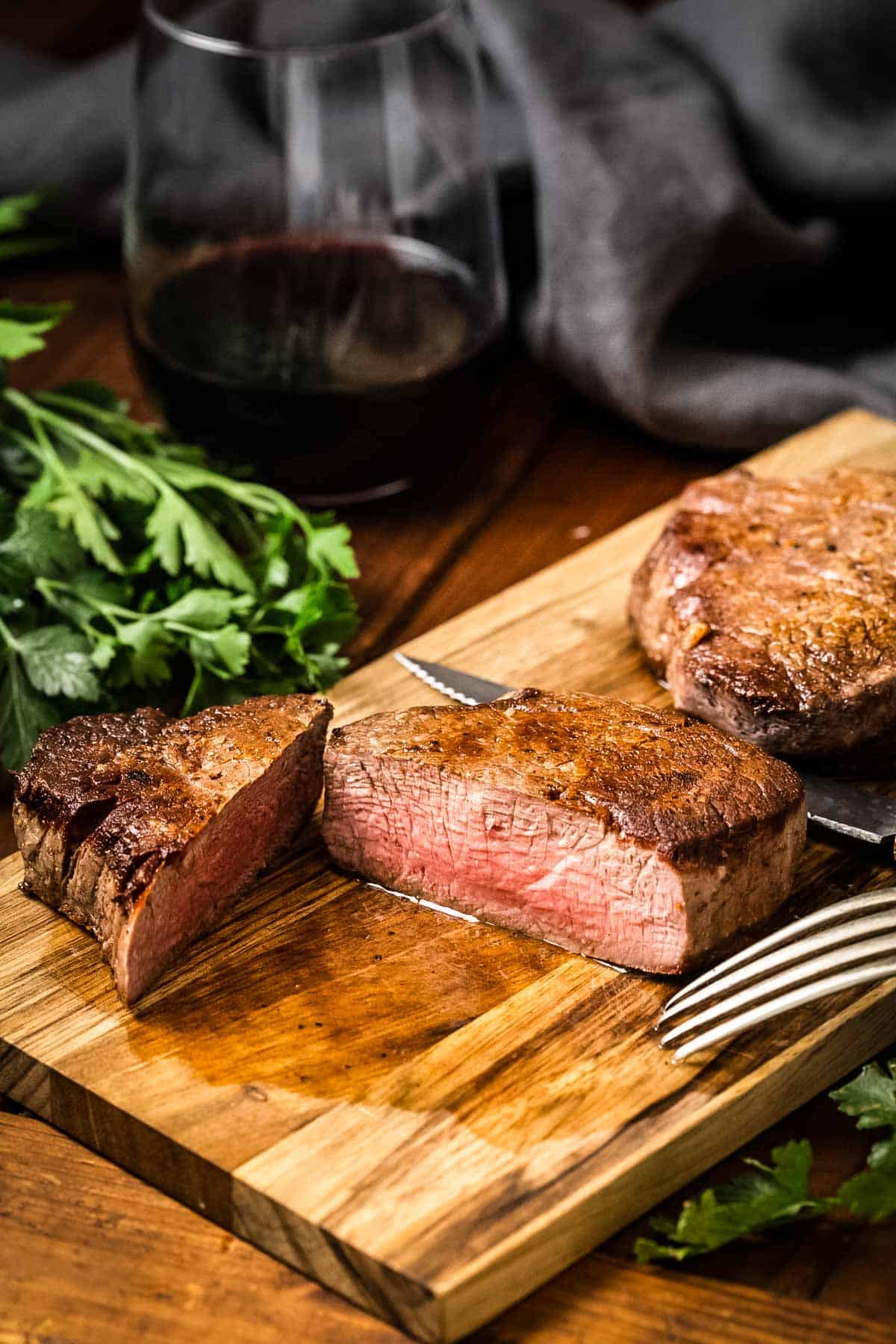
Let's Make The Perfect Pan Seared Filet Mignon
Few cuts of meat are as luxurious as filet mignon. It's an incredibly tender cut with a buttery texture, but is actually quite lean. It's a high steak that's ideal for a special occasion, like Valentine's Day, date night, or a fancy holiday dinner.
The secret to getting the perfect sear is using a cast iron skillet because it's so good at retaining heat. It's going to give you that restaurant-quality crust, while still locking in all of the juices. A simple garlic herb butter baste adds both fat and flavor, which transforms this lean cut of meat into the perfect steak!
This pan-seared filet mignon recipe is my go-to method for cooking steaks at home, but for gatherings of more than 4 people, I prefer making whole roasted beef tenderloin in the oven.
Don’t worry if it’s your first time, this guide makes it easy to prepare the most tender cut of beef with impressive results!
Want more great meat recipes? Try my authentic Italian meatballs in marinara sauce, these marinated grilled lamb chops or my family recipe for spiedini alla siciliana.

Why This Recipe Works
- The cast-iron skillet maintains a high temperature to create a perfect crust while sealing in juices.
- Starting with room temperature steak ensures even cooking from edge to center.
- Butter-basting with aromatics infuses the meat with complex flavors without overwhelming the beef.
- Thorough resting allows for maximum tenderness as muscle fibers relax and juices to redistribute.
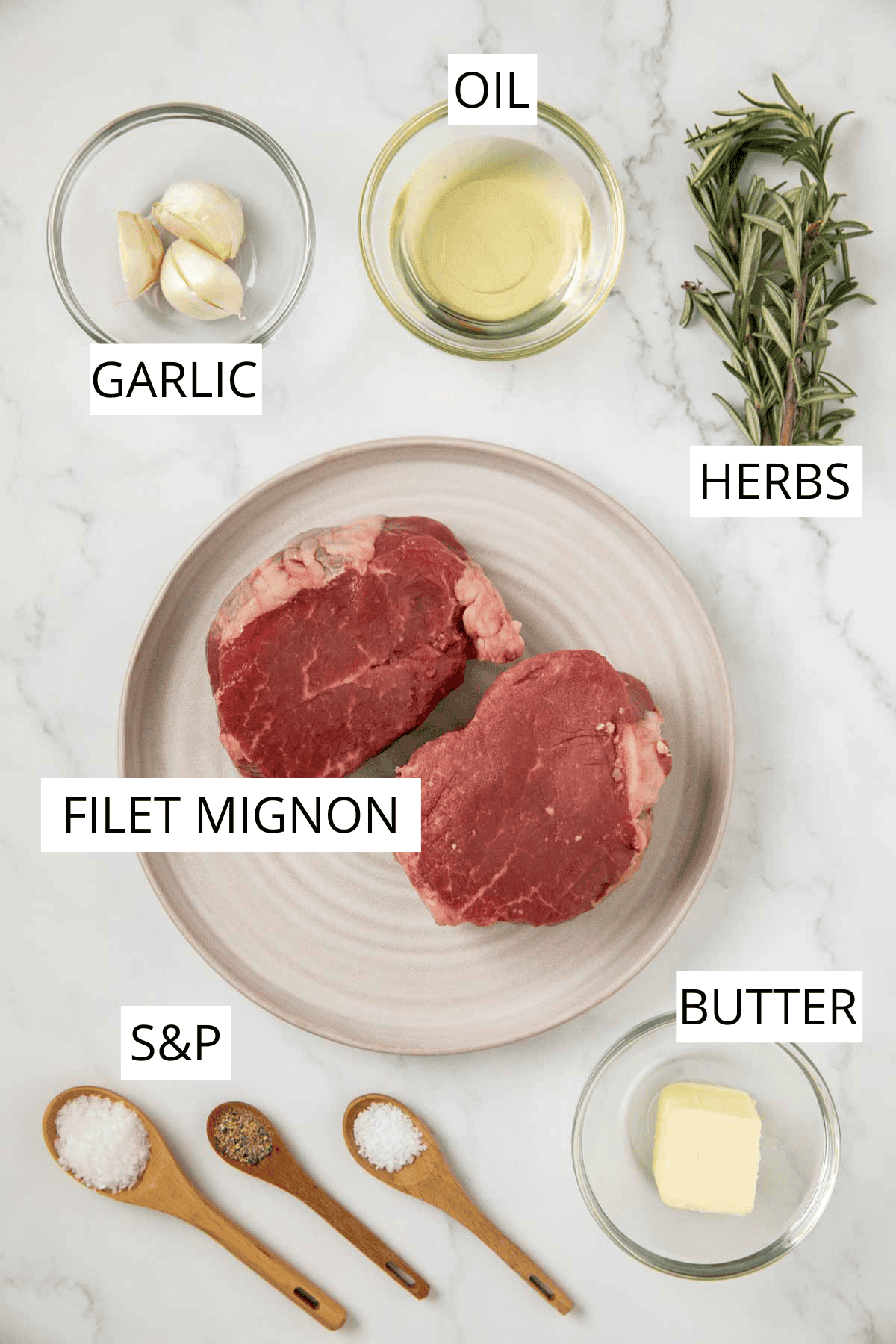
What You'll Need To Cook This Filet Mignon Steak
Filet mignon steaks - Look for thick filets at least 1½ to 2 inches thick. Prime grade offers superior marbling, but Choice grade works well too. If possible, seek out dry-aged filets for more complex, concentrated flavor. A good steak should have a rich, red color and feel firm yet slightly springy to the touch. This method also works well with other steak cuts like NY strip.
Oil with high smoke point - Avocado oil, canola oil or grapeseed oil won't impart flavors and can withstand the high heat needed for a good sear. While olive oil is wonderful for finishing your steak, its lower smoke point makes it less ideal for this cooking method.
Butter - Use high-quality unsalted butter. It adds richness and becomes the vehicle for the herbs and garlic cloves during basting.
Fresh herbs - Thyme and rosemary are classic pairings with beef and can withstand the high heat. For more on selecting quality herbs, see my guide to Italian herbs.
*Find the full ingredient list in the recipe card below!
Helpful Equipment
- 10-12 inch oven-safe pan or cast iron skillet (not a non-stick pan)
- Tongs
- Instant-read thermometer or meat thermometer
- Timer
How to Make Cast Iron Filet Mignon
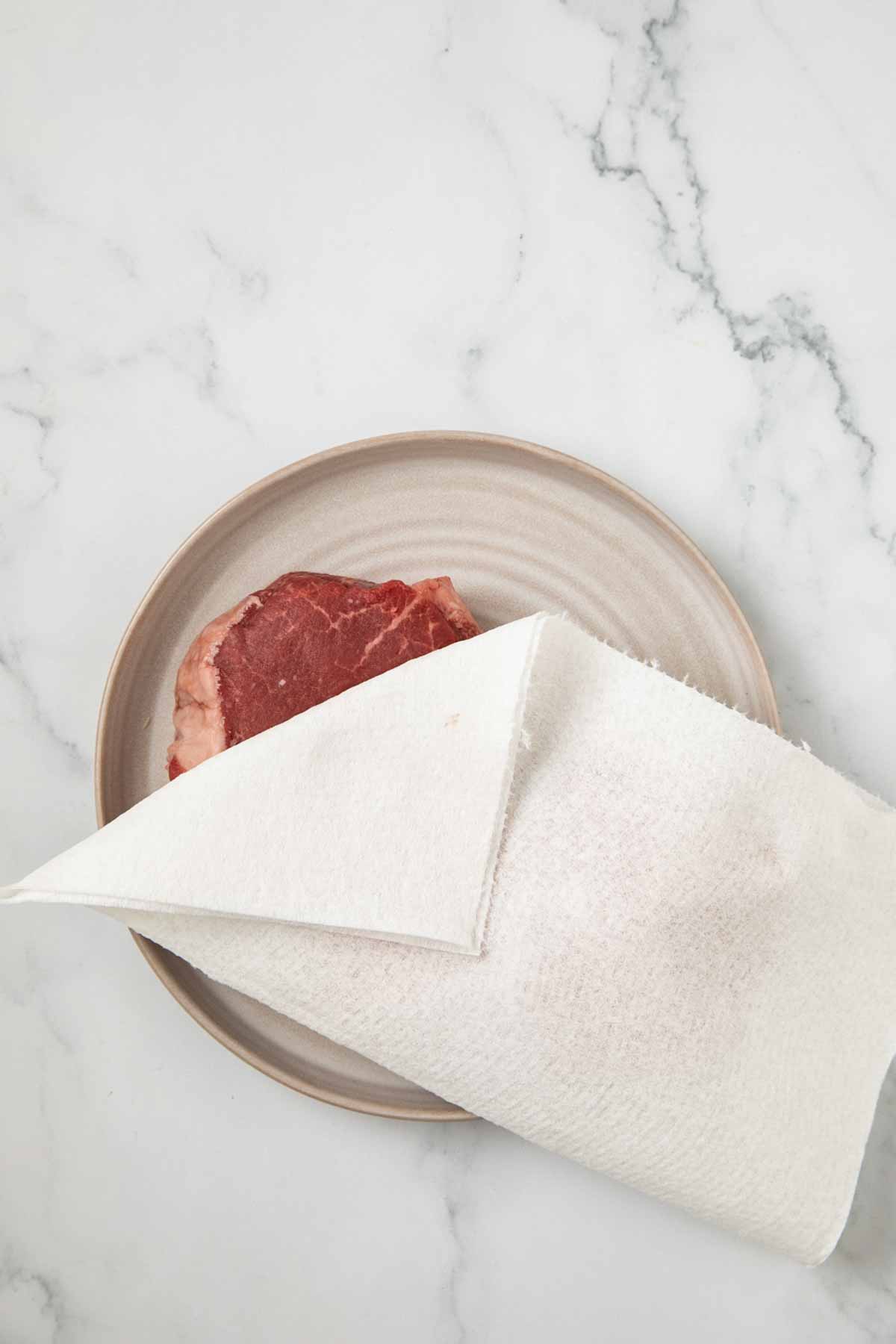
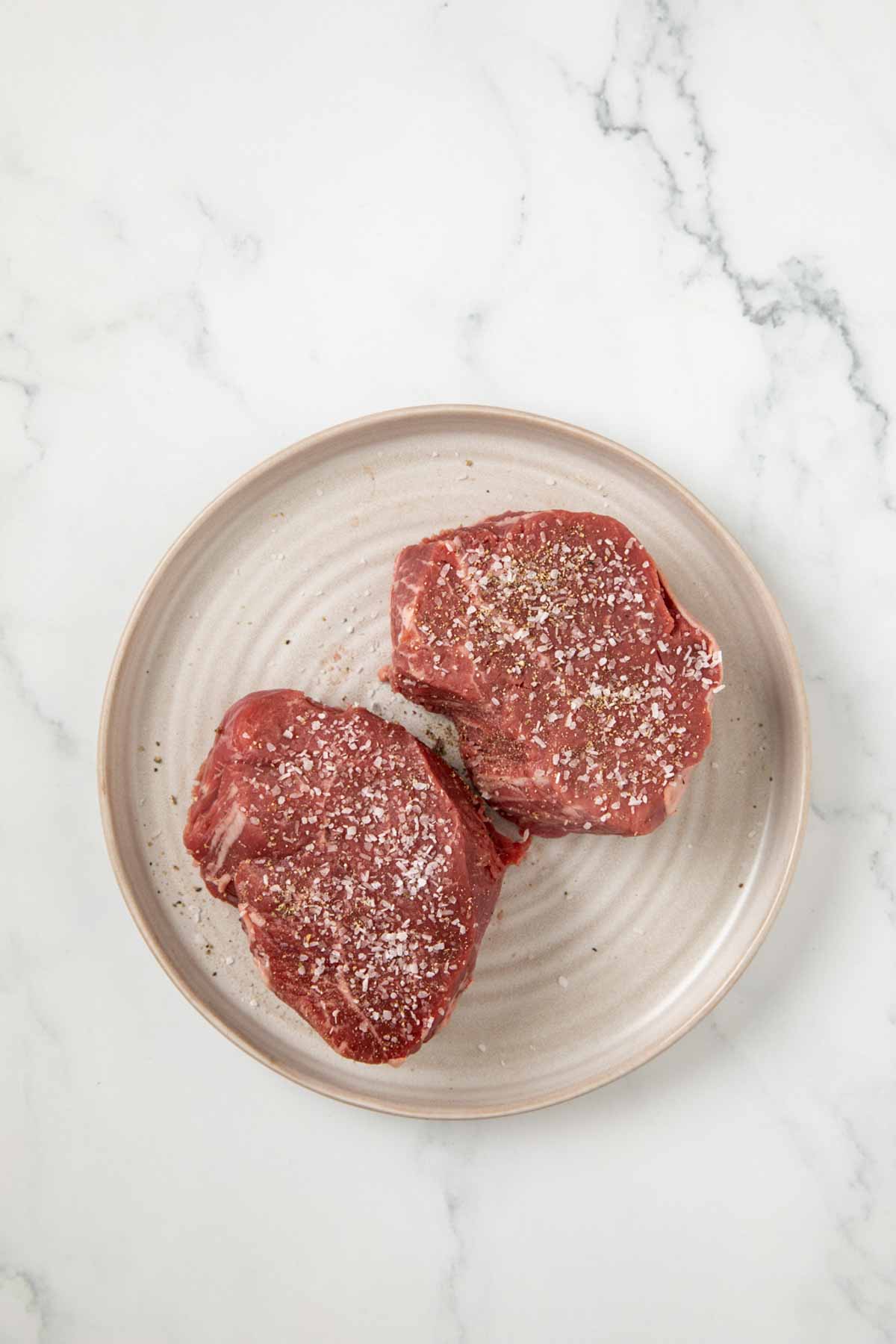
- Remove the steaks from the refrigerator and thoroughly pat dry with paper towels.
- Season generously on all sides of the steak with kosher salt and black pepper, pressing in gently with your fingers. Let sit at room temperature for 30 minutes.
- Place a cast iron skillet over medium-high heat for about 5 minutes until hot.
- Add the oil and swirl it around the pan to thoroughly coat.
Pro Tip: The hot pan should be hot enough that the oil shimmers but doesn't smoke. If it starts smoking before you place steaks in the pan, briefly remove from the heat source to let it cool slightly.

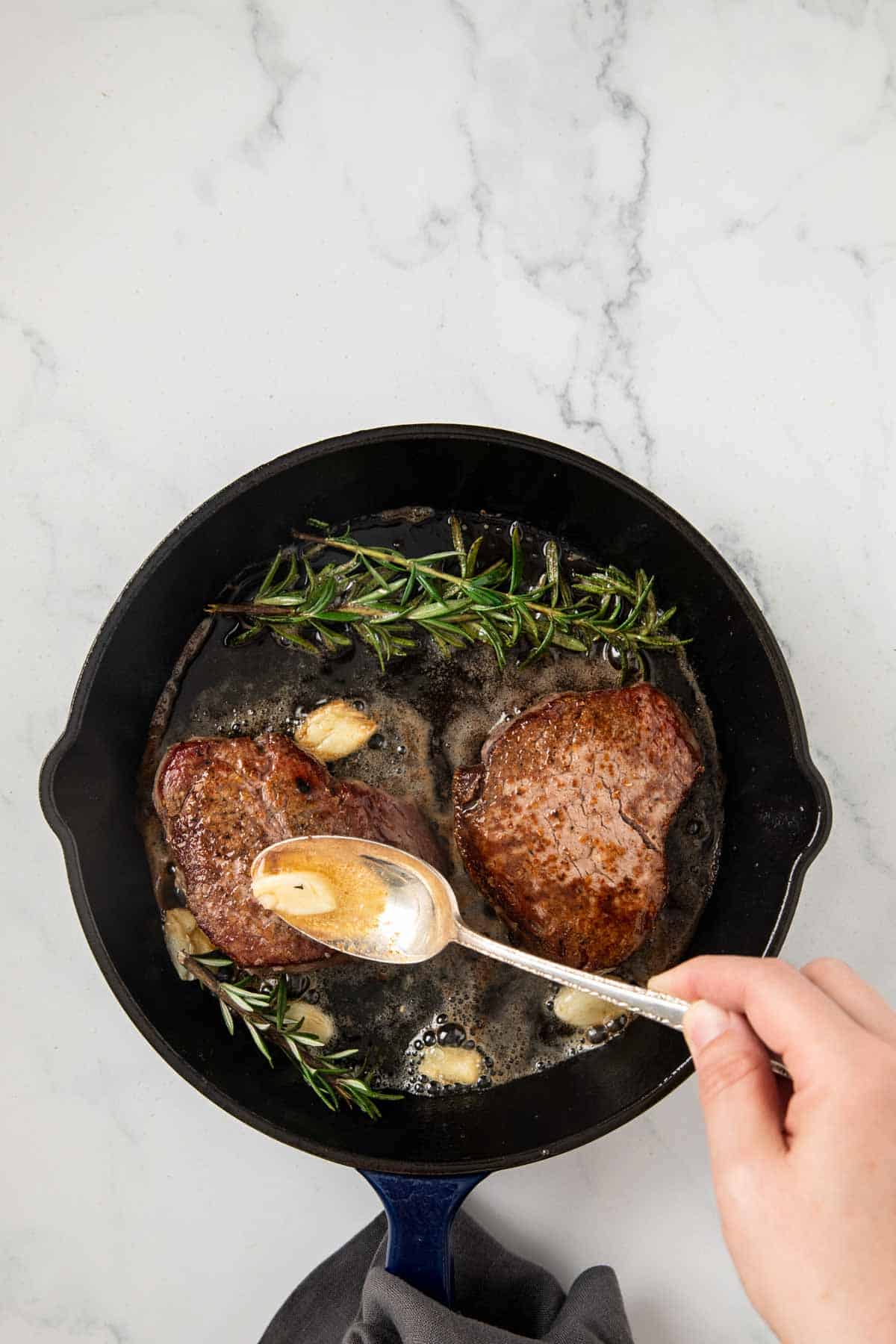
- Pat the steaks dry once more, then gently place them in the pan, one at a time, away from your body, making sure to leave plenty of room in between for proper browning.
- Cook, undisturbed, for about 4-5 minutes until a nice sear develops on the first side.
- Use tongs to flip each filet over and cook on the second side for another 4-5 minutes.
- Turn the heat down to low, then add the butter, garlic, and herbs.
- Tilt the pan and spoon the melted butter over the top of the steak repeatedly to infuse flavor, for about 2-3 minutes, depending on desired internal temperature.
Pro Tip: The butter will quickly brown and become fragrant. This browning adds nuttiness and depth. Just keep the heat low during this stage to prevent burning.

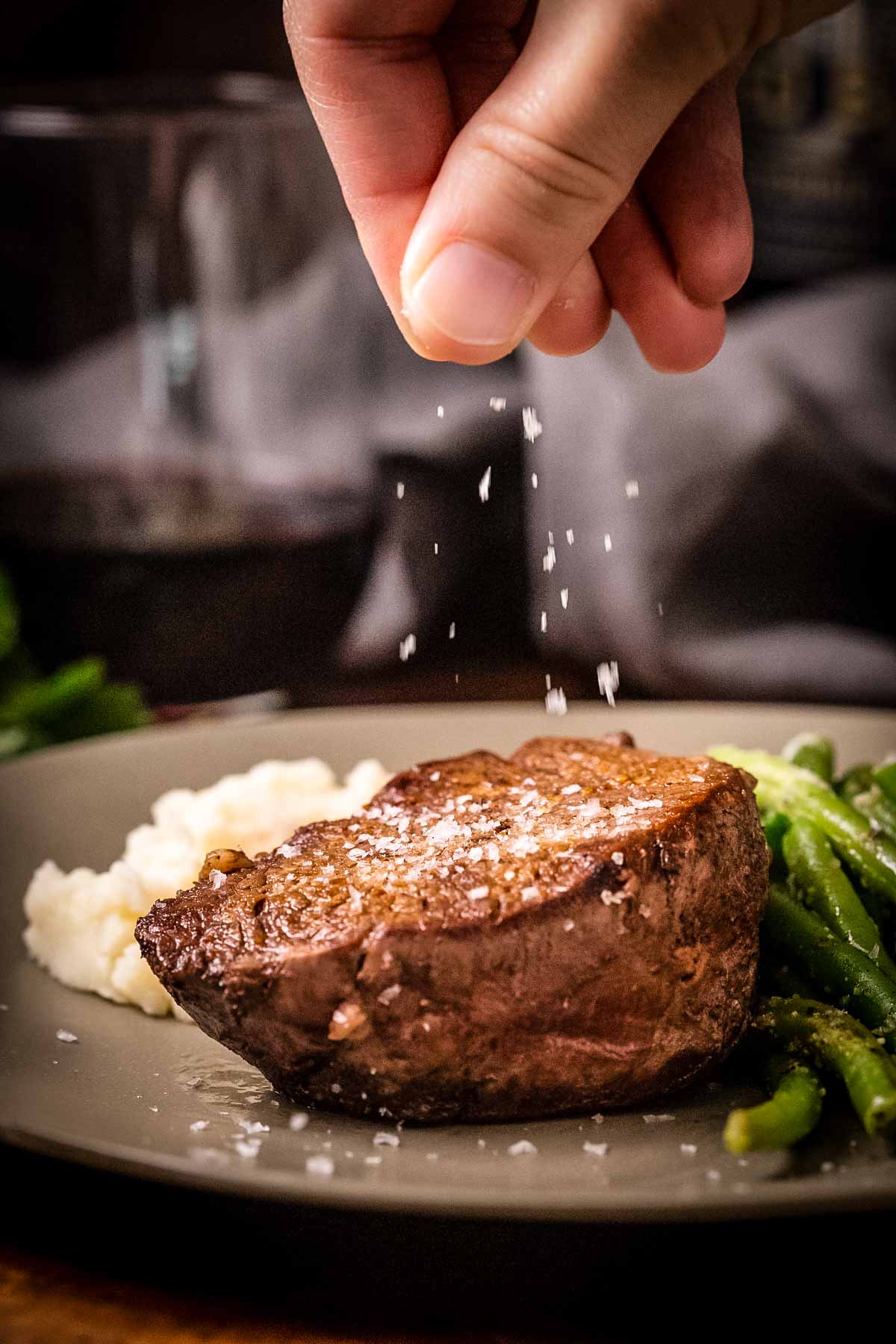
- Remove the steaks from the pan and place on a plate. Cover loosely with foil to keep warm and let the steak rest for 8-10 minutes.
- Sprinkle with sea salt and serve immediately.
Temperature Chart
The most accurate way to determine doneness is to use an instant-read thermometer, but the following cooking times can serve as a guide for making perfect pan-seared filet mignon or tenderloin steak.

For best results, we do not recommend cooking filet mignon over medium, as this lean cut will become dry at higher temperatures and won't result in a juicy, tender steak.
For very thick filets, you can also use the hot oven method: transfer your oven-safe cast iron skillet to a preheated oven at 400°F for 5-6 minutes for medium-rare or 6-7 minutes for medium.
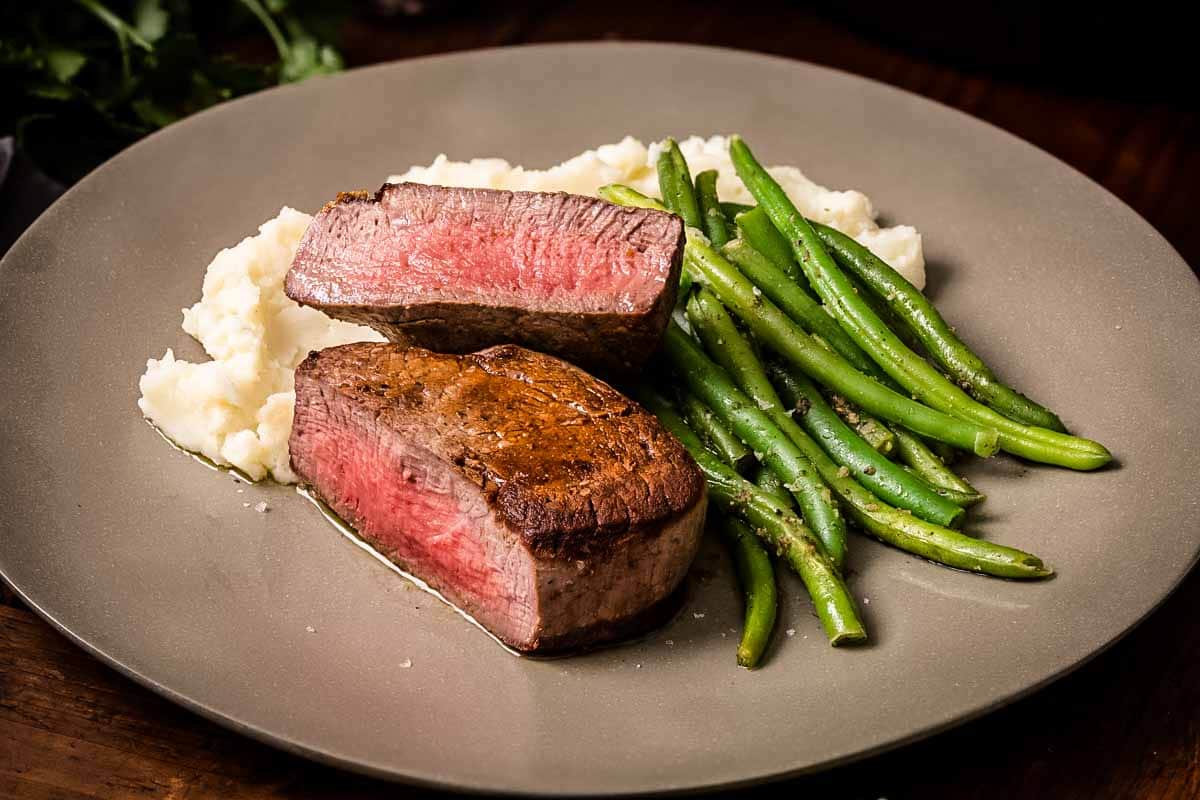
Pan Seared Filet Tips
- Focus on developing a good pan searing. Don't move the steaks for the first 4-5 minutes to allow proper caramelization.
- Use an instant-read thermometer for precision, especially when cooking expensive cuts.
- Be patient during the rest period. It allows the internal juices to redistribute and is essential for juicy steaks.
- For an even better crust, salt the filets up to 24 hours in advance and leave uncovered in the refrigerator on a baking sheet. This will allow the seasoning to penetrate more deeply and dry the outside for more caramelization.
Variations
There are so many different ways to jazz up a simple seared steak!
- Top with caramelized onions and blue cheese for a classic steakhouse combination.
- Create bacon-wrapped filet mignon by securing a strip of bacon around each steak before cooking.
- Mix a simple compound butter with additional herbs, garlic and lemon, then place on top during the resting period.
- Try a surf and turf by serving alongside a Maine lobster tail, jumbo shrimp or Maryland crab cakes.
- Place sliced mushrooms in the pan about 2 minutes before adding the butter for a savory accompaniment.
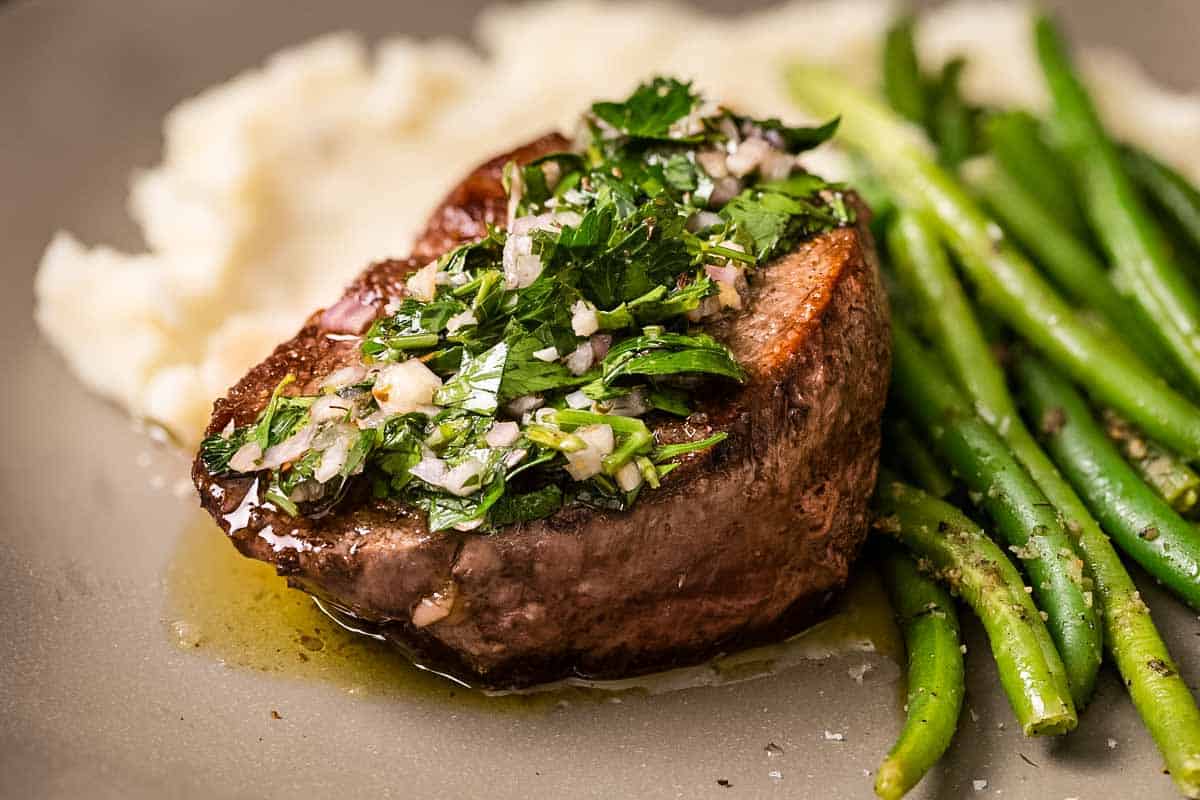
Serving Pan Seared Filet Mignon
When you perfectly sear filet mignon, it really doses't need a sauce, but they still make a delicious addition!
Chimichurri is a South American staple, while you can't go wrong with the classic French Bordelaise sauce, or the steakhouse standard creamy horseradish sauce. Try my zesty Italian salsa verde or this traditional Sicilian salmoriglio for a bright, fresh accompaniment.
For the perfect meal, serve with a one of my favorite side dishes, like classic potato gratin Dauphinoise, these simple roasted potatoes with onions, or my silky parsnip and celery root puree.
Balance the richness with green vegetables like my spinach with butter and parmesan, this baked kale gratin, or these crispy Brussels sprouts with pecorino and herbs.
A bold red wine like Cabernet Sauvignon or Malbec will make this a truly special dinner!

How to Store and Reheat
While steak is best enjoyed right away, leftover filet mignon can be stored in an airtight container in the refrigerator for up to 3 days.
For reheating, avoid the microwave and instead, warm leftover steak gently in a 250°F oven until just heated through, about 5-7 minutes.
I also love leftover filet thinly sliced and served cold or at room temperature on salads or sandwiches!
FAQ
The absolute best way to test is by flicking a drop of water into the pan – it should instantly sizzle and evaporate. The pan should be hot enough that you can only hold your hand above it briefly. It’s the perfect way to ensure a proper sear from the start.
The most common reasons are: the steak wasn't dry enough before cooking, the pan wasn't hot enough, or you moved the steak too early.
You can, but don't overcrowd the pan. Each steak needs enough space for proper searing. Cook in batches if necessary, keeping the first batch warm in a low oven.
A heavy-bottomed stainless steel pan can work, though cast iron provides better heat retention. Avoid non-stick pans, which can't reach the high temperatures needed for an ideal sear.
The finger test can help: Touch your thumb and index finger together—the flesh at the base of your thumb feels like rare. Middle finger is medium-rare, ring finger is medium, and pinky is well-done. Compare this to how the steak feels when pressed.
Did you LOVE this recipe? Please leave a star ⭐️ rating and comment and tag your creations @ColeyCooks on Instagram!
Want to Save This Recipe?
Enter your email & I'll send it to your inbox.
By submitting this form, you consent to receive emails from Coley Cooks.
Pan Seared Filet Mignon
Ingredients
- 2 steaks filet mignon 6-8 oz each, about 2 inches thick
- Kosher salt
- Freshly cracked coarse black pepper
- 1 tablespoon neutral oil such as avocado or grapeseed oil
- 2 tablespoons unsalted butter
- 2-3 garlic cloves peeled and crushed with the side of a knife
- 2-3 sprigs fresh thyme or rosemary
- Flaky sea salt such as Maldon, for finishing
Instructions
- Remove the steaks from the refrigerator and thoroughly pay dry with paper towels.
- Season generously on all sides with kosher salt and pepper, pressing in gently with your fingers. Let sit at room temperature for 30 minutes.
- Place a cast iron skillet over medium-high heat for about 5 minutes until hot.
- Add the oil and swirl it around the pan to thoroughly coat.
- Pat the steaks to dry with paper towels one more time, then gently place them in the pan, one at a time, away from your body, making sure to leave plenty of room in between so they have room to brown.
- Cook, undisturbed, for about 4 minutes until a nice crust develops on the outside.
- Use a pair of tongs to flip each filet over and cook on the other side for another 4 minutes.
- Turn the heat down to low, then add the butter, garlic, and herbs.
- Tilt the pan and spoon the melted butter over each steak, again and again, to infuse them with flavor, for about 1-2 minutes, depending on desired level of doneness.
- Remove the steaks from the pan and place them on a plate. Cover loosely with foil to keep warm and let rest for 8-10 minutes.
- Sprinkle with flaky sea salt and serve immediately.






This recipe made the perfect steak! Definitely saving it.
Thanks Heidi! So glad you loved the steaks! 🙂